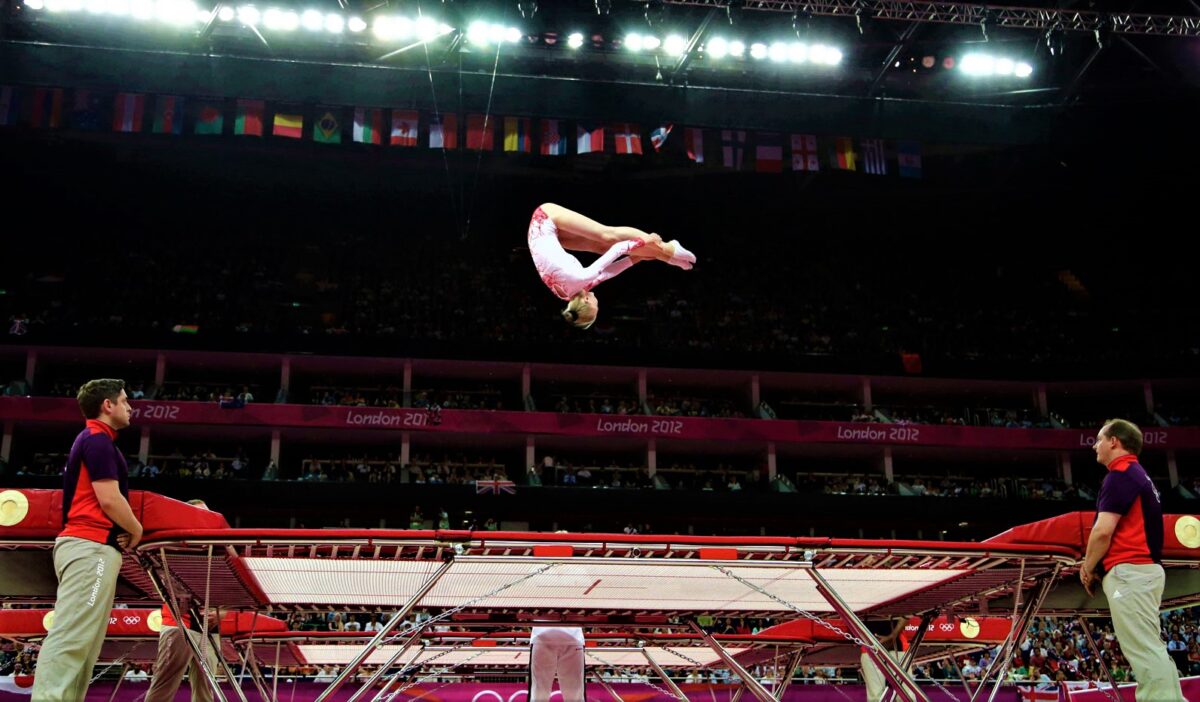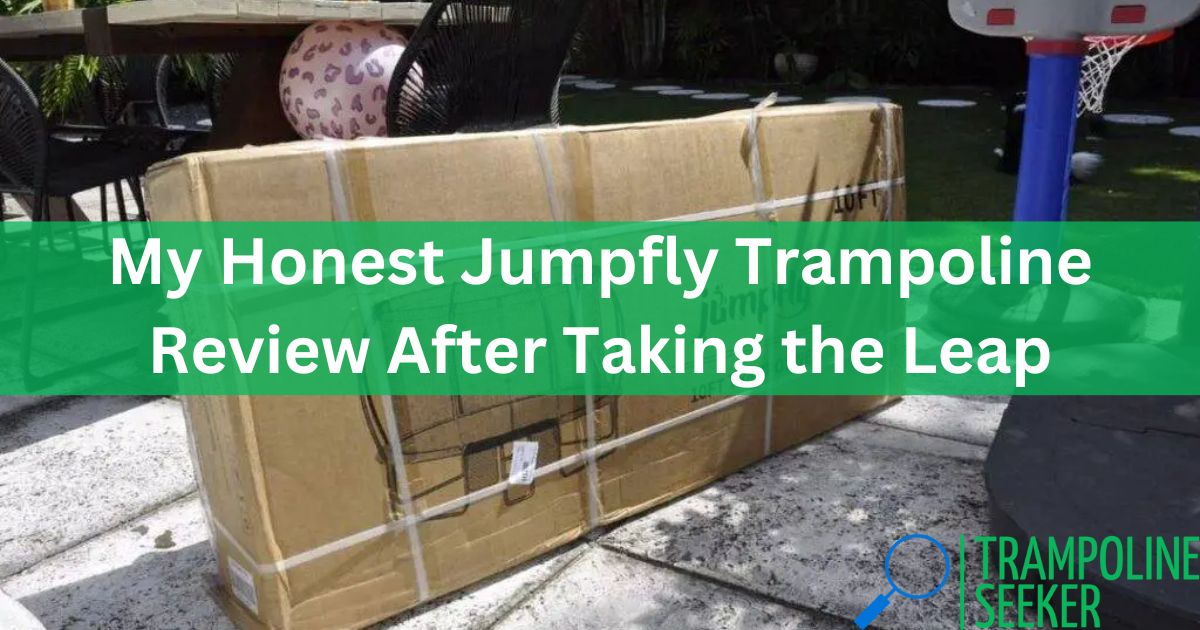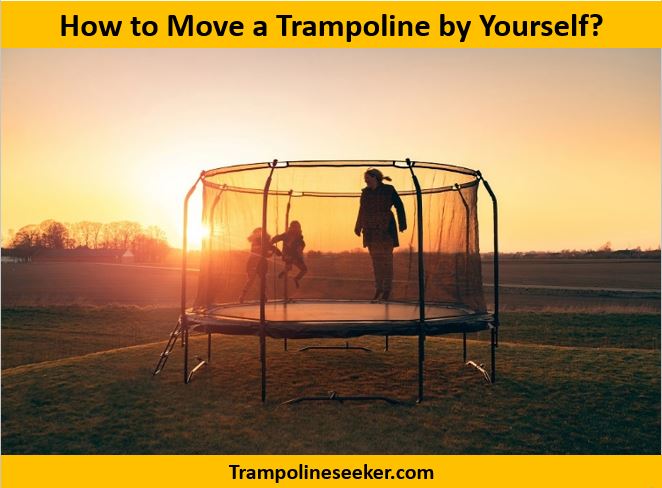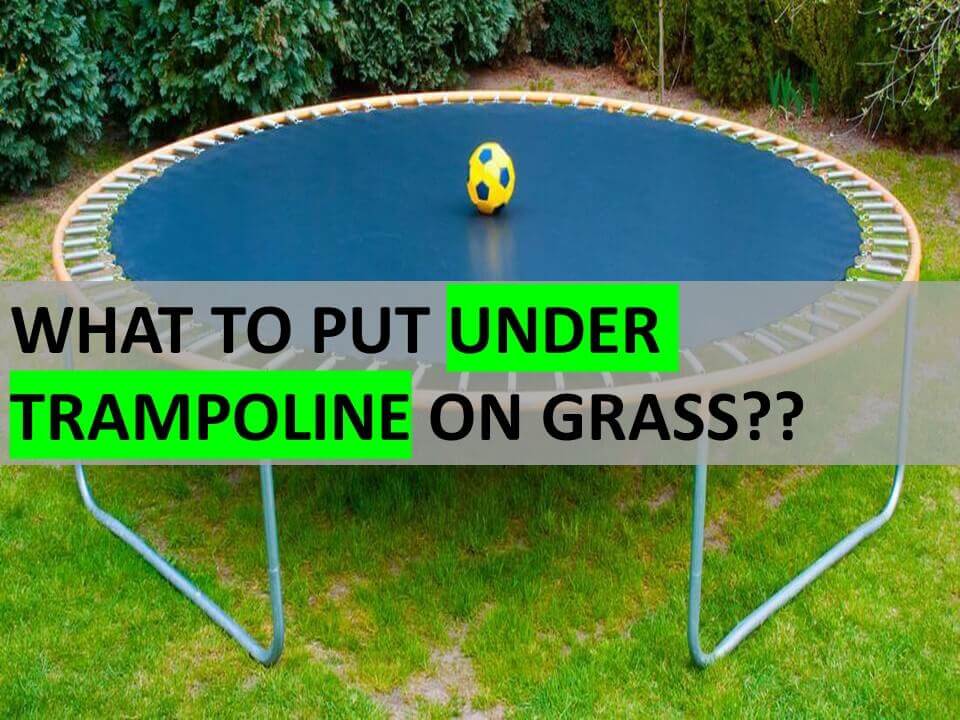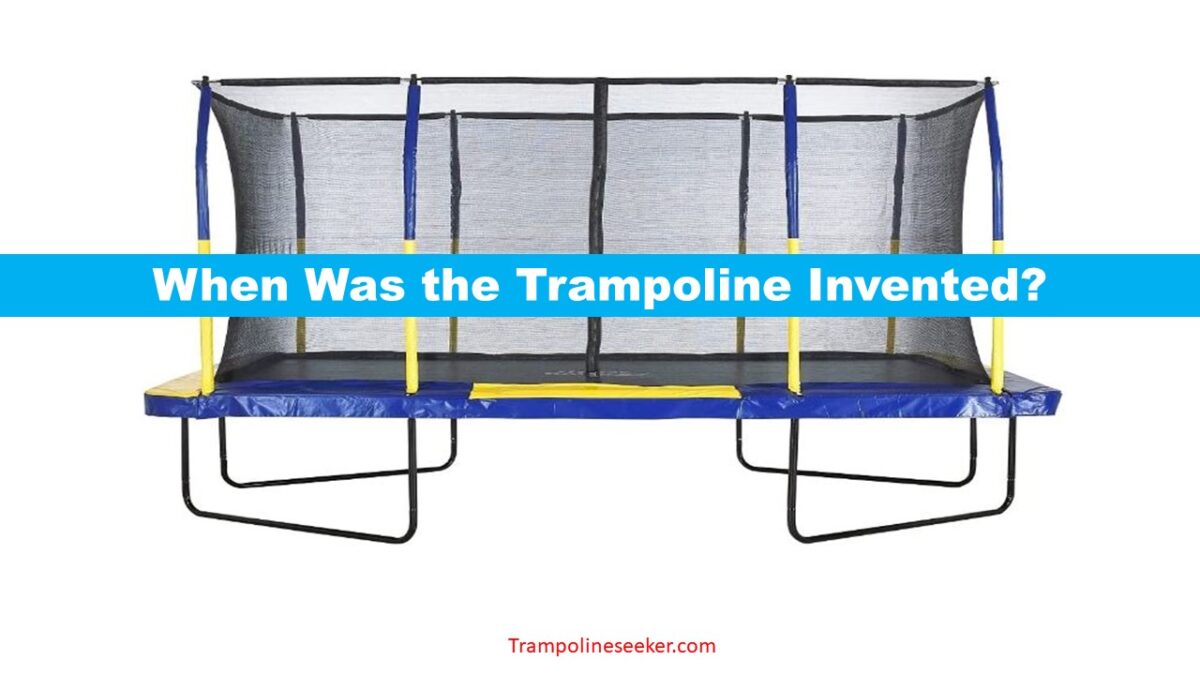Putting two trampoline mats on top of each other is an idea some trampoliners have to make their tramps more bouncy. But does doubling up actually work? Or is it a waste of money that could even damage your trampoline? I decided to research whether double tramp mats are effective or not.
My Dad’s Idea to Double Our Trampoline Mats
My dad recently bought a brand new replacement mat and springs for our family trampoline. He’s convinced that putting the new mat directly on top of our existing one and using two springs in each hole will make it “much bouncier.”
I tried explaining that it might not work how he expects and could end up being a big waste of time and money. But he’s adamant to try it out no matter what.
So that got me wondering – has anyone actually tried using two stacked trampoline mats before? Would it make the trampoline more bouncy? Or would there be problems with doing this? I decided to do some research to find out.
The Theory Behind Using Double Mats

The thinking behind putting two mats is that it will increase the overall tension provided by the springs.
Here’s a quick physics recap on how trampolines work:
- The springs provide upward tension or resistance when you land on the mat
- This springs back up to launch you in the air for the next bounce
- Stiffer springs = more tension + bounce height
So in theory, doubling the mats doubles the amount of spring tension. Instead of compressing the springs say 2 feet on a single mat, you’d only compress them 1 foot with two mats.
More tension also means the mat itself becomes stiffer. This is because there are now two layers being squeezed together by the springs rather than one.
Potential Pros of Double Trampoline Mats

- Increased bounce height: More spring tension leads to the mat rebounding faster and with greater force. So you may be able to jump higher with double mats.
- Absorbs impact better: Having two layers can cushion landings better. This may reduce injury risk, especially for heavier jumpers.
- Top mat protects bottom mat: The top mat shields the bottom one from direct exposure and wear. This could lengthen the life of your original tramp mat.
- Cheaper than buying a new trampoline: Simply buying a second mat costs less than replacing an entire trampoline.
Potential Cons of Using Two Stacked Trampoline Mats
However, there are also some significant downsides with this idea to consider:
Mat Slippage Problems
- The two loose mats will slide around and slip a lot during use. This makes it harder to control your jumping.
- Excess movement wears down the mats quicker in certain spots. Plus it’s an injury hazard if your footing gets thrown off.
Loss of “Feel” and Strain on Joints
- Having such a tight trampoline makes it harder to smoothly control your bounce. You lose the natural “feel” for landing and take-off.
- Overly stiff springs lead to high-impact landings. This puts extra shock on ankles, knees, and backs.
Greatly Increased Air Resistance
- Air drag on the mat is a major source of bouncing energy loss.
- Two loose overlapping layers causes way more air resistance compared to one tightly-stretched mat.
- The friction and slapping between mats also wastes energy each bounce.
Problems With Overstretched Springs
- Hooking two springs per hole may over-stretch them past their safe limit.
- This can lead to them wearing out and snapping faster.
- It also reduces the tension they provide over time.
Trampoline Physics Experiments
Rather than just speculating on whether double mats work or not, I decided to test it out and measure the results.
Here are two simple experiments you can also try at home to compare single vs double tramp mats:
Bounce Duration Test
This tests the energy efficiency of your trampoline setup:
- Warm up as usual then rest for a few minutes
- Set a timer for 20 jumps – focus on stretching time in the air as long as possible
- Record your 20 jump time
- Repeat the test for 100 jumps – this adds an endurance element
- Compare your times between the single and double mat configurations
What to look for:
- Faster times = less energy loss per bounce
- Slower times = having to work harder as energy gets absorbed by the mats
Bounce Height Test
This measures peak height per jump:
- Use a phone/camera capable of high fps slow motion (240+ fps ideally)
- Film yourself jumping from a low side angle that sees your feet leaving and hitting the mat
- Count the frames from foot take-off to landing in the slo-mo video
- More frames = longer airtime = higher jumping height
- Compare single mat vs double mat frame counts
What to look for:
- Higher frames/airtime = better bounce
- Lower frames = less lift per jump
Results From My Own Double Mat Experiments
I decided to test out my dad’s double mat theory for myself before he installed them. Using spare mats and tools from my uncle’s trampoline repair shop, I rigged up a test bed.
Here’s what I found from doing the experiments above:
Bounce Duration Test:
- Single Mat Times:
- 20 jumps – 14 seconds
- 100 jumps – 63 seconds
- Double Mat Times:
- 20 jumps – 12 seconds
- 100 jumps – 76 seconds
Bounce Height Test:
- Single Mat – 115 frames airborne
- Double Mat – 88 frames airborne
So both tests show that double stacking mats is counterproductive rather than beneficial:
- Less air time per jump → Less lift generated
- Having to work much harder over 100 jumps → More energy lost battling friction/drag
Therefore, double mats don’t enhance bounce performance as hoped. If anything, they appear to dampen it instead.
Expert Opinions on Using Two Trampoline Mats
To supplement my own experiments, I also looked at what experts say about putting two loose trampoline mats directly on top of each other:
Drawbacks & Warnings
“Adding a second layer will likely half your lift heights because the double drag on each bounce will sap the power.”
“We strongly advise against using multiple mats as this can overload the springs.”
“The two layers create aerial friction and instability. This new matted bouncing system often does more harm than good.”
Alternate Solution – “V-Form” Springs
“If seeking more bounce, try ‘V-Form’ springs instead. Clip a second spring midway to form a V that doubles tension without the mat issues.”
“Jumping on two loose stacked sheets is an injury waiting to happen.”
Final Verdict: Don’t Use Double Trampoline Mats
In the end, my own experiments plus all the expert warnings convinced me that putting two loose trampoline mats on top of each other is not recommended.
While it may seem logically that double mats equals double bounce, the physics in practice apparently don’t work out that way.
The lack of tension control, friction between layers, and excess drag forces all dampen performance rather than amplify it. And make for an injury-prone jumping experience to boot.
I informed my dad about everything I had learned. He agreed installing two sets of mats and springs wasn’t worth doing on our family trampoline after all.
The takeaway: Don’t stack loose secondary mats thinking you’ll increase bounce height, hang-time, or lift. Trampoline physics doesn’t work linearly like that. Focus instead on tunning your existing mat and single set of properly tensioned springs.
Other Related Blogs:
- How to Measure a Rectangle Trampoline Mat?
- How to Measure a Trampoline for a New Mat?
- Why is My Trampoline Mat Loose?
- How To Install A Mat for a New Trampoline?
- Can I Upgrade the Springs and Mat on a Cheaper Trampoline?
Frequently Asked Questions
If double mats don’t work, what about triple or quadruple mats?
Even more layers would only compound all the same dampening problems – friction, air resistance, elasticity loss, etc. There are no extra “magical” bounce benefits above a properly tensioned single mat.
Would sewing two mats together help?
Yes, having the mats tightly unified prevents slippage and some energy losses. But the issues of overstretching springs and excessive air drag remain.
Is there any benefit at all to using two mats?
A second loose mat can provide extra injury protection thanks to its shock absorbing. But any bouncing enhancement is unfortunately negligible – and outweighed by the control problems introduced.
Could I double mat temporarily for safety while teaching kids?
It’s possible, but still introduces control/slippage learning issues. Going with a properly tensioned single assembly designed for beginners may be a better option.
Conclusion
My trampoline double mat experiments and research taught me that the negatives of pairing two loose mats outweigh any potential spring tension benefits.
The lack of tension control, mat slippage, peak force issues, and excess drag forces simply sap too much performance. And introduce injury risks to boot.
While logical in theory, the real-world physics of trampoline systems proves otherwise. Stick to properly tuning your single level mat for optimum bouncing results instead.
I’m relieved I warned my dad against stacking two mats on our family trampoline. Not only would it have wasted money, it could’ve introduced safety issues while providing negligible extra lift.
Sometimes logical assumptions about how things should work need to be tested rather than taken at face value. Especially when physics is involved!
Articles You May Like to Read:





